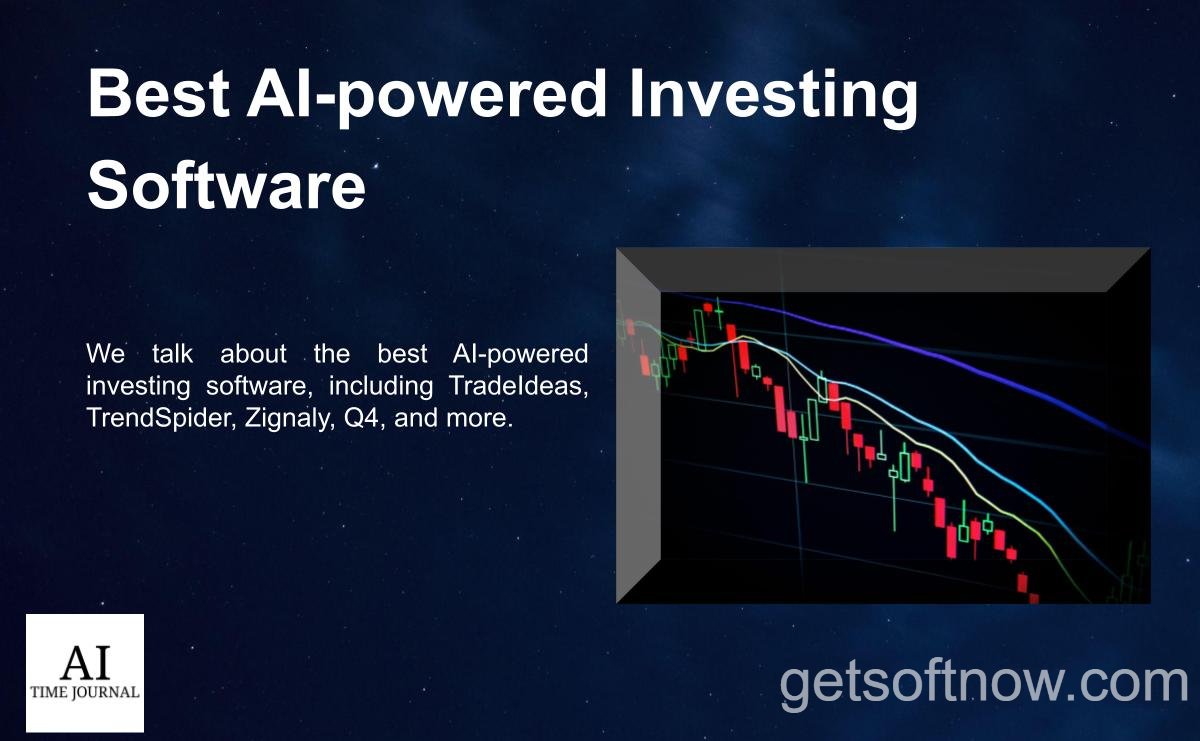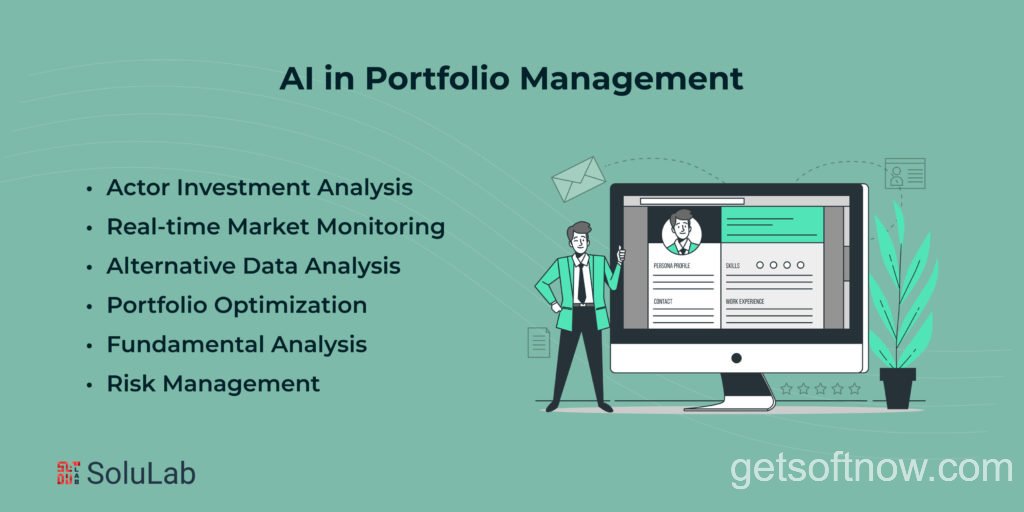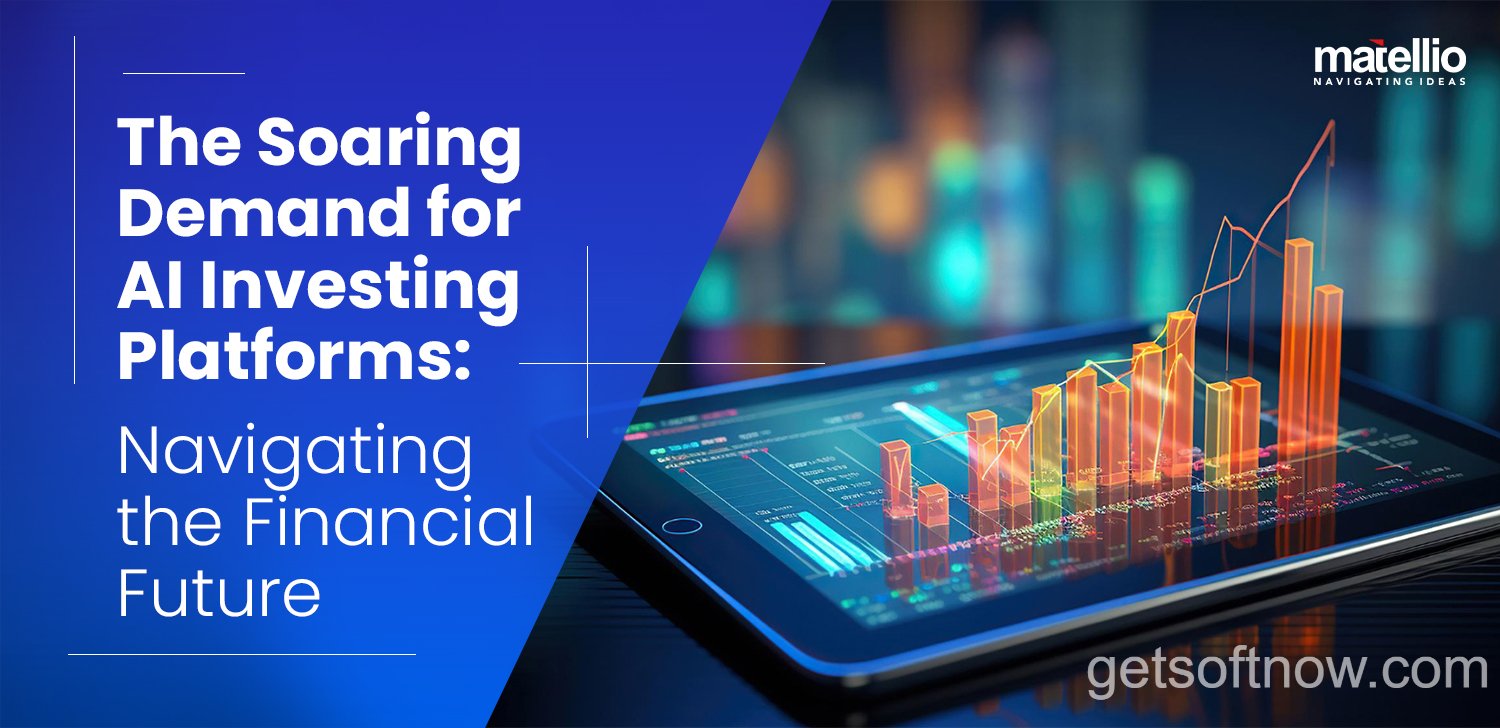Introduction to AI Investing Software
In the ever-evolving world of finance, the integration of artificial intelligence (AI) into investment strategies is no longer a mere concept – it’s a reality that’s rapidly gaining traction. As technology continues to advance, AI investing software has emerged as a game-changer, offering investors a powerful tool to navigate the complexities of the market. According to a recent report by McKinsey & Company, over 60% of investment firms are already embracing AI technologies, and this trend is only expected to accelerate in the coming years.
What is AI Investing Software?
At its core, AI investing software leverages advanced algorithms and machine learning techniques to analyze vast amounts of data, identify patterns, and make informed investment decisions. This innovative technology combines the principles of artificial intelligence with financial modeling, enabling it to process and interpret data at a scale and speed that far surpasses human capabilities.

The driving force behind AI investing software is its ability to continuously learn and adapt based on the data it processes. By ingesting and analyzing historical market data, news reports, financial statements, and a myriad of other relevant information, the software can identify trends, spot potential opportunities, and make data-driven investment recommendations.
Benefits of AI Investing Software
The adoption of AI investing software has the potential to revolutionize the investment industry by offering a multitude of benefits, including:
- Improved decision-making: By harnessing the power of advanced data analysis and pattern recognition, AI investing software can provide investors with more informed and objective investment recommendations, minimizing the impact of human biases and emotions.
- Increased efficiency and cost-effectiveness: Automating various aspects of the investment process, such as data analysis, research, and portfolio optimization, can significantly reduce operational costs and improve overall efficiency.
- Faster identification of investment opportunities: With the ability to process vast amounts of data in real-time, AI investing software can quickly identify potential investment opportunities that might be overlooked or missed by human analysts.
- Reduced human errors: By relying on data-driven algorithms and automated processes, AI investing software minimizes the risk of human errors, which can lead to costly mistakes in investment decisions.
“AI is not only transforming the way we invest but also challenging our understanding of risk and return. By harnessing the power of data and advanced algorithms, AI investing software is pushing the boundaries of what’s possible in the world of finance.” – Bernard Marr, Forbes
Key Features of AI Investing Software
While the specific features and capabilities of AI investing software may vary depending on the provider and the intended use case, some of the key features commonly found in these solutions include:
- Machine learning algorithms: At the heart of AI investing software lies a suite of advanced machine learning algorithms designed to analyze vast amounts of data and identify patterns that can inform investment decisions.
- Natural language processing (NLP): NLP capabilities enable the software to analyze and interpret unstructured data, such as news articles, financial reports, and social media sentiment, providing valuable insights into market trends and investor sentiment.
- Predictive analytics and forecasting: By leveraging historical data and advanced modeling techniques, AI investing software can make predictions about future market trends, price movements, and other relevant factors, aiding in the decision-making process.
- Portfolio optimization and risk management tools: Many AI investing software solutions offer tools for optimizing portfolio allocation, managing risk, and monitoring performance, helping investors achieve their desired risk-return profile.

Types of AI Investing Software
The world of AI investing software encompasses a diverse range of solutions tailored to meet the varying needs of investors. Some of the most common types include:
- Robo-advisors: These automated investment platforms leverage AI and machine learning to provide personalized portfolio management services, typically for retail investors.
- Quantitative trading platforms: Designed for institutional investors and hedge funds, these platforms utilize AI algorithms to execute high-frequency trades based on market data and patterns.
- Portfolio management systems: Aimed at investment professionals and wealth managers, these solutions employ AI techniques to optimize portfolio construction, rebalancing, and risk management.
- Research and analysis tools: AI-powered research and analysis tools assist investors and analysts in gathering insights, identifying trends, and making informed investment decisions.
Potential Drawbacks and Limitations
While the potential benefits of AI investing software are undeniable, it’s essential to acknowledge and address the potential drawbacks and limitations of this technology:
- Reliance on historical data and potential biases: AI investing software is often trained on historical data, which may not accurately reflect future market conditions or account for unprecedented events, potentially leading to biased or suboptimal decisions.
- Complexity and lack of transparency: The algorithms and decision-making processes employed by AI investing software can be highly complex and opaque, making it challenging for investors to fully understand and trust the recommendations.
- Cybersecurity risks and data privacy concerns: As with any technology handling sensitive financial data, AI investing software is susceptible to cyber threats and data breaches, raising concerns about data privacy and security.
- Regulatory challenges and compliance issues: The rapid adoption of AI investing software has outpaced the development of regulatory frameworks, leading to potential challenges in ensuring compliance and addressing ethical considerations.

Choosing the Right AI Investing Software
With the proliferation of AI investing software solutions in the market, selecting the right platform can be a daunting task. When evaluating potential options, investors should consider the following factors:
- Investment goals and risk tolerance: Different AI investing software solutions may be better suited for specific investment goals, asset classes, and risk profiles. Investors should carefully assess their objectives and risk tolerance to find the most appropriate solution.
- Track record and performance: Reviewing the historical performance and track record of the AI investing software can provide valuable insights into its effectiveness and reliability.
- Transparency and interpretability: While the algorithms behind AI investing software may be complex, it’s crucial to understand the underlying methodologies and decision-making processes to the extent possible. Investors should prioritize solutions that offer a reasonable level of transparency and interpretability.
Integration with Traditional Investment Strategies
While AI investing software offers a wealth of benefits and capabilities, it’s important to recognize that it is not a replacement for traditional investment strategies and human expertise. Instead, many experts advocate for a hybrid approach that combines the power of AI with the experience and intuition of human investors and analysts.
By leveraging the strengths of both AI and human decision-making, investors can benefit from the efficiency and data-driven insights provided by AI investing software, while also incorporating qualitative factors, sector expertise, and market intuition provided by experienced professionals.
“The true power of AI in investment management lies in the combination of human expertise and machine intelligence. By seamlessly integrating the two, we can unlock new levels of insight, efficiency, and performance.” – BlackRock
However, integrating AI investing software with traditional investment strategies is not without its challenges. It requires a careful balance and clear delineation of responsibilities between human and machine decision-making processes. Additionally, investors and firms must ensure that their teams are appropriately trained and equipped to effectively leverage the capabilities of AI while maintaining a critical understanding of its limitations.

The Future of AI Investing Software
As AI technology continues to evolve and mature, the potential impact of AI investing software on the investment industry is poised to grow even further. Some of the key trends and advancements that are likely to shape the future of this technology include:
- Improved personalization and adaptive strategies: With advancements in machine learning and natural language processing, AI investing software may become increasingly adept at tailoring investment strategies to individual preferences, goals, and risk profiles, offering a truly personalized investment experience.
- Integration of alternative data sources: Beyond traditional financial data, future AI investing software may incorporate a wider range of alternative data sources, such as social media sentiment, satellite imagery, and Internet of Things (IoT) data, providing even deeper insights into market trends and investment opportunities.
- Increased transparency and interpretability: As the field of AI continues to progress, there is a growing focus on developing more transparent and interpretable models, which could help address some of the concerns around the opaque nature of current AI algorithms in investing.
- Ethical considerations and responsible AI: With the increasing prevalence of AI investing software, there will be a heightened emphasis on developing ethical frameworks and guidelines to ensure the responsible use of AI in finance, addressing concerns around bias, fairness, and accountability.

As the capabilities of AI investing software continue to grow, it’s clear that this technology will play an increasingly prominent role in shaping the future of investment management. However, it’s important to approach this evolution with a balanced perspective, recognizing both the transformative potential and the potential limitations and challenges that must be addressed.
Conclusion
The rise of AI investing software represents a paradigm shift in the world of investment management, offering a powerful blend of advanced data analysis, pattern recognition, and automated decision-making capabilities. While the benefits of this technology are compelling, from improved decision-making and increased efficiency to faster identification of investment opportunities, it’s crucial to acknowledge and address the potential drawbacks and limitations.
As investors and investment firms navigate this evolving landscape, the key lies in striking the right balance between leveraging the power of AI and maintaining the invaluable human expertise and intuition that have long been at the core of successful investment strategies. By embracing a hybrid approach that combines the strengths of both AI and human decision-making, the industry can unlock new levels of insight, efficiency, and performance.
Ultimately, the journey towards fully realizing the potential of AI investing software is just beginning, and the future holds exciting possibilities as the technology continues to advance. As with any transformative innovation, it’s essential to approach this evolution with a critical eye, prioritizing ethical considerations, transparency, and responsible implementation.
At GetSoftNow, we remain committed to keeping our readers informed about the latest developments in the world of software and technology, including the rapidly evolving field of AI investing software. Stay tuned for more insightful articles and updates as we continue to explore the boundless potential of artificial intelligence in the realm of finance and beyond.
Frequently Asked Questions (FAQs)
Q: Is AI investing software suitable for individual investors or only for institutional players?
A: While AI investing software was initially adopted by institutional investors and hedge funds, there are now solutions tailored for individual investors as well. Robo-advisors and certain portfolio management platforms offer AI-powered investing services for retail investors, making it accessible to a broader audience.
Q: How does AI investing software handle unprecedented market events or “black swan” scenarios?
A: One of the challenges faced by AI investing software is its reliance on historical data for training and pattern recognition. Unprecedented events or “black swan” scenarios that deviate significantly from historical patterns can potentially lead to suboptimal decisions or biases. To mitigate this risk, many solutions incorporate human oversight and continuous model refinement to adapt to unforeseen market conditions.
Q: Can AI investing software completely replace human expertise in investment management?
A: While AI investing software offers powerful capabilities, it is generally recommended to adopt a hybrid approach that combines AI with human expertise and intuition. Human professionals bring valuable qualitative insights, sector knowledge, and the ability to account for factors that may be difficult to quantify or model using AI alone.
Q: How are regulatory bodies addressing the challenges posed by AI investing software?
A: Regulatory bodies and financial authorities around the world are actively working to develop frameworks and guidelines to address the challenges and potential risks associated with the use of AI in investment management. These efforts aim to ensure compliance, ethical implementation, and investor protection while fostering innovation in the field.
Q: What are the potential ethical considerations surrounding the use of AI investing software?
A: As with any powerful technology, the use of AI investing software raises ethical considerations related to issues such as algorithmic bias, fairness, accountability, and transparency. There is an ongoing discussion around developing ethical frameworks and guidelines to ensure the responsible and equitable use of AI in finance, protecting the interests of all stakeholders involved.
Choosing the Right AI Investing Software
With the proliferation of AI investing software solutions in the market, selecting the right platform can be a daunting task. When evaluating potential options, investors should consider the following factors:
- User-friendliness and ease of integration: The AI investing software should be intuitive and easy to use, with a seamless integration process that aligns with the investor’s existing workflows and systems.
- Scalability and customization: As an investor’s needs evolve over time, the chosen solution should be scalable and capable of accommodating growth, while also offering customization options to tailor the software to specific requirements.
By carefully evaluating these factors, investors can increase their chances of finding an AI investing software solution that aligns with their unique goals, risk profiles, and investment strategies.
Integration with Traditional Investment Strategies
While AI investing software offers a wealth of benefits and capabilities, it’s important to recognize that it is not a replacement for traditional investment strategies and human expertise. Instead, many experts advocate for a hybrid approach that combines the power of AI with the experience and intuition of human investors and analysts.
“The true power of AI in investment management lies in the combination of human expertise and machine intelligence. By seamlessly integrating the two, we can unlock new levels of insight, efficiency, and performance.” – BlackRock
One effective approach to integrating AI investing software with traditional strategies is to leverage AI for data analysis, pattern recognition, and generating investment recommendations, while relying on human expertise for qualitative analysis, risk assessment, and final decision-making. This synergistic approach allows investors to benefit from the speed and efficiency of AI while maintaining the critical thinking and experience that human professionals bring to the table.
Additionally, many investment firms are exploring the concept of “human-in-the-loop” AI systems, where human analysts are actively involved in the training, monitoring, and refinement of the AI models. This collaborative approach helps to ensure that the AI algorithms are aligned with the firm’s investment philosophy and risk management strategies, while also providing a layer of human oversight and validation.

However, integrating AI investing software with traditional investment strategies is not without its challenges. It requires a careful balance and clear delineation of responsibilities between human and machine decision-making processes. Additionally, investors and firms must ensure that their teams are appropriately trained and equipped to effectively leverage the capabilities of AI while maintaining a critical understanding of its limitations.
The Future of AI Investing Software
As AI technology continues to evolve and mature, the potential impact of AI investing software on the investment industry is poised to grow even further. Some of the key trends and advancements that are likely to shape the future of this technology include:
- Improved personalization and adaptive strategies: With advancements in machine learning and natural language processing, AI investing software may become increasingly adept at tailoring investment strategies to individual preferences, goals, and risk profiles, offering a truly personalized investment experience.
- Integration of alternative data sources: Beyond traditional financial data, future AI investing software may incorporate a wider range of alternative data sources, such as social media sentiment, satellite imagery, and Internet of Things (IoT) data, providing even deeper insights into market trends and investment opportunities.
- Increased transparency and interpretability: As the field of AI continues to progress, there is a growing focus on developing more transparent and interpretable models, which could help address some of the concerns around the opaque nature of current AI algorithms in investing.
- Ethical considerations and responsible AI: With the increasing prevalence of AI investing software, there will be a heightened emphasis on developing ethical frameworks and guidelines to ensure the responsible use of AI in finance, addressing concerns around bias, fairness, and accountability.
- Democratization of AI-powered investing: As the technology becomes more accessible and user-friendly, AI investing software may help to democratize the investment landscape, enabling individual investors to tap into sophisticated data analysis and investment strategies that were previously available only to institutional players.

As the capabilities of AI investing software continue to grow, it’s clear that this technology will play an increasingly prominent role in shaping the future of investment management. However, it’s important to approach this evolution with a balanced perspective, recognizing both the transformative potential and the potential limitations and challenges that must be addressed.
Conclusion
The rise of AI investing software represents a paradigm shift in the world of investment management, offering a powerful blend of advanced data analysis, pattern recognition, and automated decision-making capabilities. While the benefits of this technology are compelling, from improved decision-making and increased efficiency to faster identification of investment opportunities, it’s crucial to acknowledge and address the potential drawbacks and limitations.
As investors and investment firms navigate this evolving landscape, the key lies in striking the right balance between leveraging the power of AI and maintaining the invaluable human expertise and intuition that have long been at the core of successful investment strategies. By embracing a hybrid approach that combines the strengths of both AI and human decision-making, the industry can unlock new levels of insight, efficiency, and performance.
Ultimately, the journey towards fully realizing the potential of AI investing software is just beginning, and the future holds exciting possibilities as the technology continues to advance. As with any transformative innovation, it’s essential to approach this evolution with a critical eye, prioritizing ethical considerations, transparency, and responsible implementation.
At GetSoftNow, we remain committed to keeping our readers informed about the latest developments in the world of software and technology, including the rapidly evolving field of AI investing software. Stay tuned for more insightful articles and updates as we continue to explore the boundless potential of artificial intelligence in the realm of finance and beyond.
Frequently Asked Questions (FAQs)
Q: How secure are AI investing software solutions in terms of data privacy and cybersecurity?
A: Data privacy and cybersecurity are critical concerns when it comes to AI investing software, as these solutions handle sensitive financial data. Reputable providers employ robust security measures, such as encryption, access controls, and regular security audits, to protect user data. However, it’s essential for investors to thoroughly evaluate the security protocols and track record of any AI investing software solution they consider.
Q: Can AI investing software be used for trading activities or is it primarily focused on portfolio management?
A: While many AI investing software solutions are designed for portfolio management and optimization, there are specialized platforms tailored for quantitative trading and high-frequency trading activities. These solutions leverage AI algorithms to execute trades based on real-time market data and identified patterns.
Q: How can individual investors get started with AI investing software?
A: For individual investors interested in exploring AI investing software, robo-advisors and certain portfolio management platforms offer accessible entry points. These solutions often have lower minimum investment requirements and user-friendly interfaces, making them suitable for retail investors seeking to leverage AI capabilities.
Q: How do AI investing software providers ensure compliance with regulatory requirements and industry standards?
A: Reputable AI investing software providers work closely with regulatory bodies and industry associations to ensure compliance with relevant laws, regulations, and industry standards. This includes adhering to guidelines around data privacy, fair lending practices, and responsible AI implementation. Providers also undergo regular audits and certifications to maintain compliance.
Q: Can AI investing software be used in combination with other investment strategies, such as value investing or technical analysis?
A: Absolutely. AI investing software can be integrated with various investment strategies and philosophies, including value investing, technical analysis, and more. The AI algorithms can be trained on data and patterns relevant to these strategies, providing insights and recommendations that align with the chosen approach.
By addressing these frequently asked questions, we hope to provide clarity and insights into the world of AI investing software, empowering readers to make informed decisions about leveraging this transformative technology in their investment strategies.

Leave a Reply